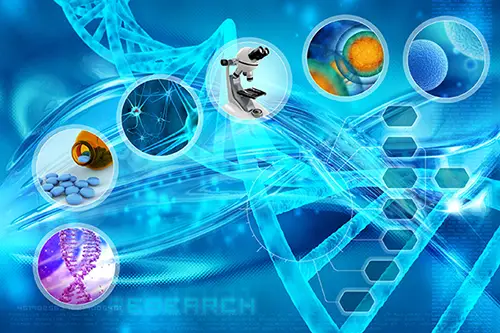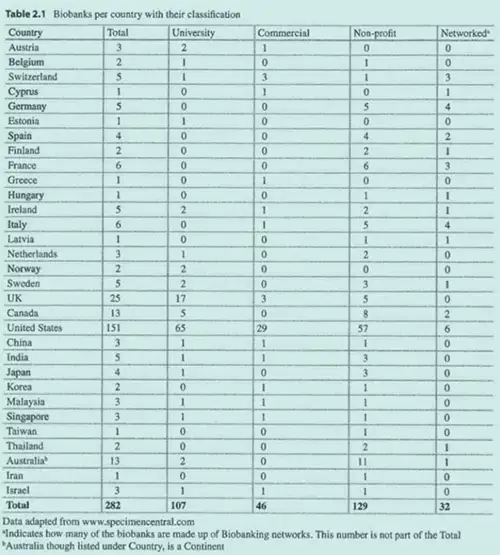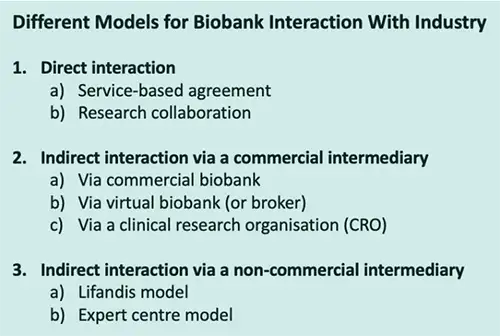
Most human biosamples originate in the public sector. That is in public hospitals and publicly-funded population biobanks. So we need public-private partnerships for biosamples to reach the private sector.
Public-Private Partnerships in Biobanking
This section describes different models for public-private partnership involving biobanks and industry.
(1) Direct interaction of the biobank with industry
Many biobanks around the world have service-based or supply agreements with industry. In these agreements, the supply of biosamples is in return for a fee. Often, the transfer of samples takes place in the context of research collaboration. For example, this might be lab-based translational research or a clinical trial.
Direct interactions like this may sound simple. Yet, they are often challenging to arrange in practice. Part of the problem is that industry requests are often very specific. In addition, they may also be demanding and time-sensitive. For more on this topic, see:
- Hofman et al., 2013. Public-private relationships in biobanking: a still underestimated key component of open innovation.
- Puchois et al., 2013. The Cardinal Role of Biobanks and Human Biospecimen Collections in Biomarker Validation.
(2) Indirect interaction via a commercial intermediary
Three main types of commercial intermediary facilitate the transfer of biosamples to the private sector.
- Human Tissue Procurement Companies or Commercial Biobanks. These are generally companies whose primary function is to supply the industry sector with biosamples. These companies partner with collection sites in various hospitals. They may also have networks that extend internationally. Moreover, they sometimes partner with other commercial biobanks for the supply of biosamples.
- Biobanking Brokers or ‘Virtual Biobanks’. These are companies similar in function to commercial biobanks. Yet, they do not own a physical biobank. Instead, these companies liaise between the supplier and the requester to find suitable matches. They also make the necessary arrangements for the transfer of biosamples.
- Contract Research Organisations. These companies provide a variety of services to clients in the industry sector. These services may include biosample procurement.
All these commercial intermediaries play a vital role in providing biosamples to the industry sector. Yet, the scientific literature contains very little information about them. In order to understand the biobanking ecosystem, we need to pay attention to these vital actors.
(3) Indirect interaction via a not-for-profit intermediary
- The Expert Centre model. This model centres on a not-for-profit company which is a technology centre. It acts as a trusted intermediary between the biobank and industry (van Ommen, 2014).
- The Lifandis Model. Lifandis is a publicly-funded initiative in Norway. Interestingly, this provides a trusted interface between industry and the publicly-funded HUNT study. The HUNT study includes an extensive resource of biosamples and data.
The Emergence of Human Tissue Procurement Companies
As mentioned, commercial biobanks have not received much attention in the scientific literature. So here is a little more background information and history about them.
Pharmagene was a UK drug discovery company founded in 1996. It obtained human biosamples from a nearby hospital (Gray et al., 1999). It used the samples to conduct studies on behalf of clients in the pharmaceutical industry. In 2006 Pharmagene merged with a US company called Asterand. Significantly, this merger resulted in the formation of the commercial biobank, Asterand Bioscience (PharmaTimes, 2005).
Genomics Collaborative Inc (GCI) was a functional genomics company founded in 1998 in Cambridge, USA. It had a dual business model. Firstly, a fee-for-service side providing biosamples to the pharmaceutical industry. Secondly, a collaborative research side. In this, it provided access to its database of functional genomics data (Eiseman, 2003).
In 2007, Bioserve acquired Genomics Collaborative. Today BioServe offers access to their biobank, to a partner biobank network and a tissue procurement service.
There were many similar companies founded around the same. These include DNA Sciences Inc (1998), Ardais (1999) and First Genetic Trust (2000). All these companies were in the USA.
Growth Of Biobanking Since The Turn Of The Century
Since the turn of the century, the demand for human biosamples has increased. The number of biobanks has grown in line with this. One contributing factor was the 2004 publication of a white paper by the US FDA. This publication had the following title. Challenge and Opportunity on the Critical Path to New Medical Technologies. This report emphasised the need to improve the efficiency of industry’s drug development process. It highlighted the need to use biomarkers to guide the development process. So, of course, industry needs biosamples to assess biomarkers.
In their article, Somiari and Somiari (2015) present the following table. One source of information for this table is the SpecimenCentral.com biobank directory.

The table shows the number of biobanks per country, broken down by biobank type. They categorise the biobanks as university, commercial, non-profit and networked. For the USA, they list 29 commercial biobanks. The next highest number was for the UK and Switzerland (3 in both cases).
The Somiari and Somiari (2015) article is noteworthy for another reason. It is one of the very few publications that mention commercial biobanks.
Commercial Biobanks Play A Key Role In Supplying Industry
It is worth noting that we cannot assess the impact of commercial biobanks by their number alone. The reasons are as follows:
- Unlike academic biobanks, commercial biobanks provide the majority of their samples to industry.
- Unlike academic biobanks, they cannot rely on institutional or grant funding. So they are highly motivated to supply samples to the industry sector.
- Commercial biobanks may operate on an industrial scale with industrial efficiency.
This article is on the Biosample Hub blog. Other posts in this blog include:
- Why Academic / Hospital Biobanks Should Provide Biosamples to Industry
- Ensuring Public Support For Biobank Cooperation With Industry
- The Main Actors Providing Biosamples To Industry
- Biosample Needs of Different Industry Players
- The Dual Role of Academic Biobanks
- What is Commodification?
- Acceptable Transactions in Biobanking
- Why Biobank Access Policies Should Be Publicly Available
- Biospecimen Provenance: What Researchers Need To Know
The Biosample Hub platform https://biosamplehub.org/ encourages ethical sourcing of biosamples for the industry sector.

